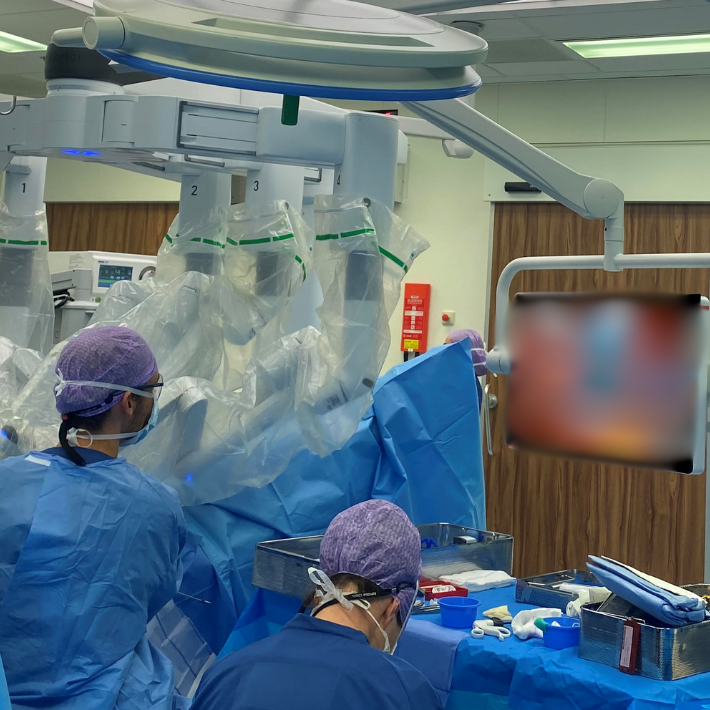LUMC integrates AI into robotic-guided prostate cancer surgery
The surgeon sees the movements of the probe displayed on the screen.
&width=710&height=710)
A key challenge in these surgeries is the identification of metastases. Before surgery begins, patients are injected with a small amount of radioactive substance. Nuclear imaging is then used to visualize how the radiotracer accumulates in lymph nodes that contain tumor cells. During surgery, the surgeon can use a small detector (called a drop-in gamma probe), to identify lymph nodes based on their radioactive content. Being keyhole surgery, means the probe, along with a small camera, enters the abdominal cavity through 12mm holes in the abdominal wall. The surgeon does not hold the drop-in probe with his or hands. The robot does that. The surgeon controls the robotic arms with joysticks and sees its movements directly on a 3D video screen.
AI trained to track probe
To help understand how technologies like the drop-in probe make surgery more effective, an AI program was created and developed at LUMC. The AI analyses the surgical videos. Researcher Samaneh Azargoshasb of the radiology department was in charge of the related study. "Based on clinical videos, we trained an AI system to track the location of the drop-in probe in space. The resulting digitization of the path travelled by the probe in the patient allows us to extract all kinds of data, such as the speed, acceleration, and angle of the probe," she explained.
Surgeons can use the system to quantitatively analyze the proficiency of their surgeries. For example, Azargoshasb states "we could clearly see that different types of radiotracers support a different level of surgical decision making. Hereby the radiotracers with the highest signals in de lymph nodes made surgeons most confident." Confidence is shown, for example, by the amount of times that the surgeon uses the drop-in probe to investigate the target. The goal of this evaluation is to gain insight into the chemical design components that help surgeons to operate even better and more effectively.
Capabilities of AI don't stop
In addition to evaluation, the ability to digitize – and objectively evaluate- the surgeons' actions can also be used for educational purposes. Furthermore, the system is so generic that it will be suitable for operations of other cancers that use the drop-in probe. As long as the surgical videos are being recorded.
And the capabilities of the new AI system don't stop there. "Right now we still do the video analysis after surgery. Our ultimate goal is to provide feedback to the surgeon during surgery. There are still all kinds of restrictions on that at the moment, such as the patient's privacy, so we need to look at that very carefully," the researcher said.
The study was published in Advanced Intelligent Systems.
&width=710&height=710)
&width=710&height=710)